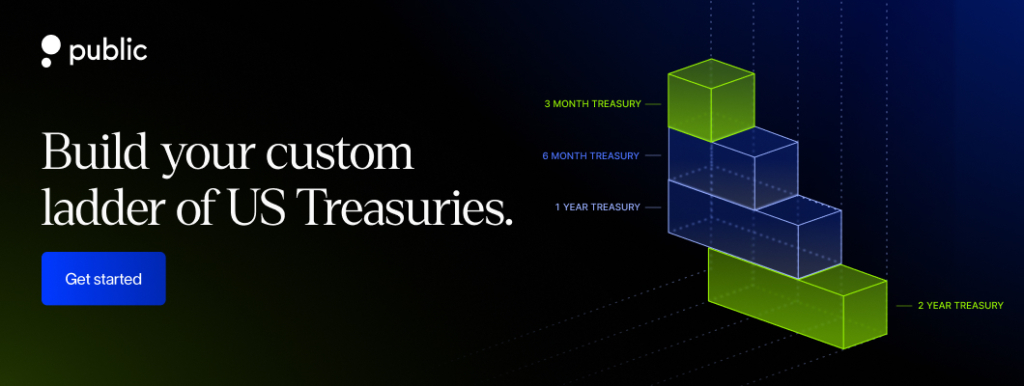Treasury bills have a maturity period of less than one year and can be purchased for a price under the face value stated on the bill. Investors can buy short-term Treasury bills on TreasuryDirect (U.S. government’s portal) or through brokers like Public and banks.
The current T-bill rate for 6 months is 3.59% Investors can calculate the return on investment by considering the purchase price, sale price, and the number of days between the purchase and sale.
Public’s Treasury Bill Calculator offers reliable and quick results by inputting your investment amount, term length, and interest rate. This allows you to make informed decisions. Try it now and watch your investment journey begin!
How to calculate T-Bill yield?
Calculating potential yield on a T-Bill before placing a bid in auction can be helpful in setting a fixed minimum interest rate as part of a competitive bid on treasury bills.
To calculate the yield on a T-Bill, you will need the following information:
- The face value of the T-Bill
- The discount rate (the amount of interest paid at maturity)
- The current market price for the T-Bill
Once you have this information, you can use the T-bill calculator above to calculate the yield.
What are Treasury Bills & how do they work?
The US Treasury Bill is a popular and safe investment that is offered by the United States Government. With comparatively low risks, these bonds are ideal for those who are looking for a secure way to store their money in the short term. Treasury bills have a maturity period of less than one year.
The price of the bill varies based on competitive bidding situations. When you purchase one, you will be paying a price under the face value stated on the bill. You will not receive any payment during the set period, but at its end you will be paid out this amount.
How do Treasury Bills Work?
The U.S. Treasury department provides Treasury securities, including Treasury Bills, with short-term maturity as a means of funding government projects.
Investors can buy Treasury bills from the government at a discounted price and then redeem them when they reach maturity, which can vary from a few weeks to one year.
If a Treasury bill is cashed out before maturity, the owner has the option to resell it on the secondary market. When Treasury bills reach maturity, investors are given the entire face value by the federal government. The investment income earned is based on the discounted amount at the time of purchase.
